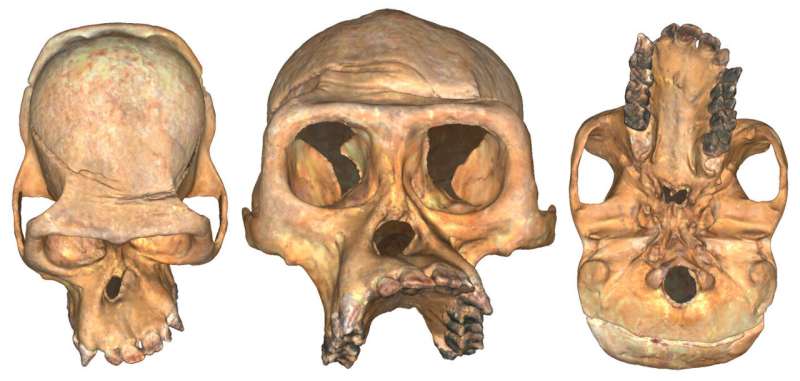February 24, 2022 report
Facial asymmetry in mountain gorillas likely tied to inbreeding

A large international team of researchers has found a possible connection between facial asymmetry in mountain gorillas and inbreeding. In their paper published in Proceedings of the Royal Society B, the group describes comparing the facial features of gorilla groups to learn about the nature of their facial asymmetry.
Prior research has shown that over time, facial asymmetry in mountain gorillas living on a nature preserve in Rwanda has become more common. Some researchers have suggested the increase may be due to early life stress, while others have suggested that it might be due to a preference in chewing on one side of the mouth. In this new effort, the researchers have found evidence suggesting that it is due to inbreeding.
The facial asymmetry in the mountain gorillas has been described as a twisting of the face and has been seen in the gorillas since the early 1970s. To learn more about its possible roots, the researchers studied 40 gorilla skulls collected over the past 100 years. They then did the same with eastern lowland gorillas and western lowland gorillas. In comparing the skulls between the groups they found that the asymmetry was strongest in the mountain gorillas, followed by eastern lowland gorillas and least in western lowland gorillas. They noted that the population of mountain gorillas is the lowest among the groups, with eastern lowland gorillas in the middle and western lowland gorillas with the highest population. The researchers suggest that the lower number of mountain gorillas results in significant inbreeding, which could be the reason for the development of the asymmetrical faces.
The researchers note that prior research with humans and other primates has shown that both genders tend to prefer symmetry in their mates—thus, the development of asymmetry could have arisen as a means of preventing inbreeding. They found no difference in asymmetry based on chewing preferences. They also state that mountain gorillas living on the preserve experience little stress during any part of their life. Thus, inbreeding seems the most likely reason for the asymmetry.
More information: Kate McGrath et al, Facial asymmetry tracks genetic diversity among Gorilla subspecies, Proceedings of the Royal Society B: Biological Sciences (2022). DOI: 10.1098/rspb.2021.2564
Journal information: Proceedings of the Royal Society B
© 2022 Science X Network





















